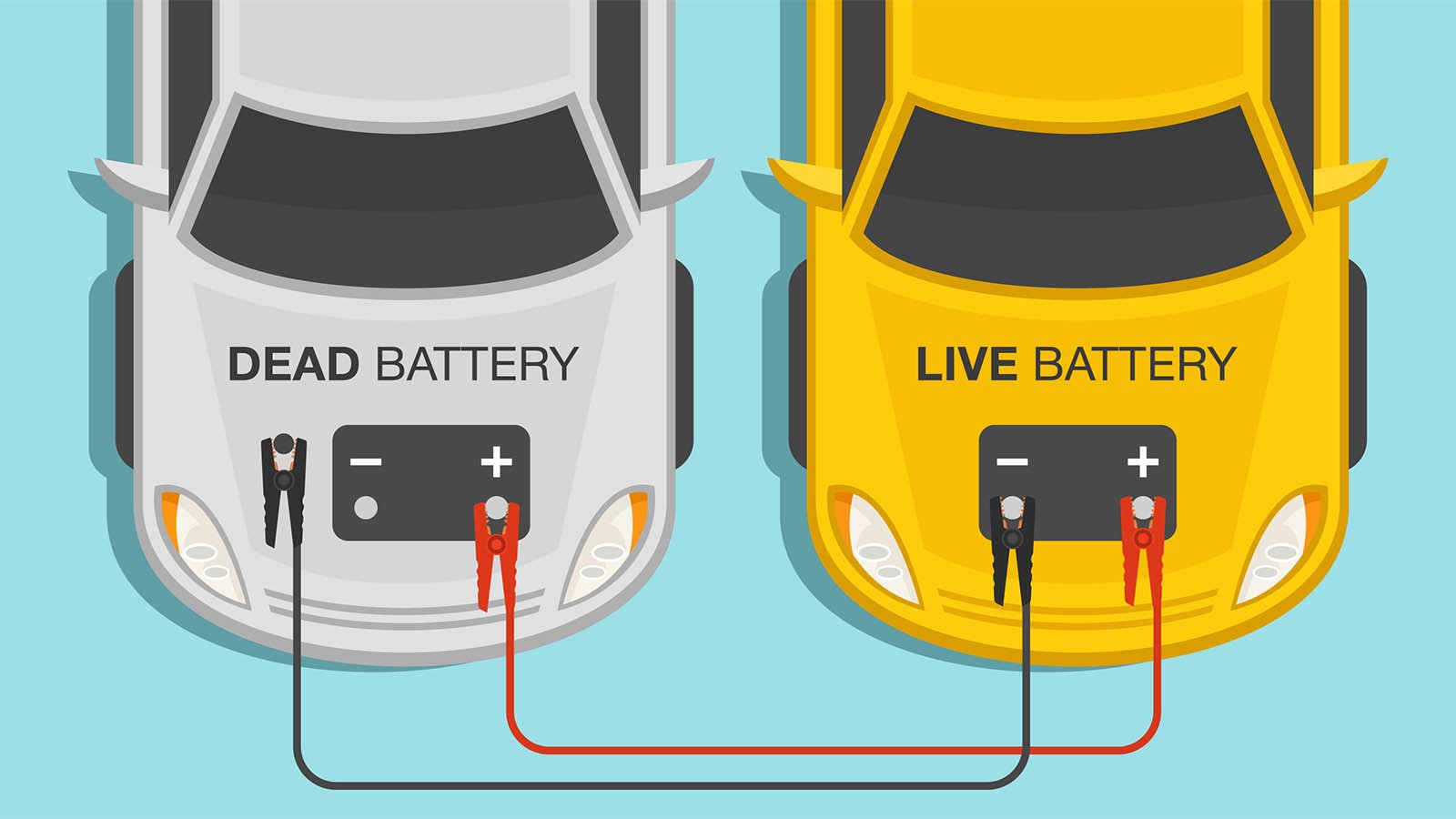A dead car battery is one of the most common car problems that can leave you stranded at the most inconvenient times. Fortunately, jump-starting a battery is a straightforward process that can get you back on the road quickly. This guide will walk you through everything you need to know to safely and effectively jump-start a dead car battery in just a few easy steps.
Understanding a Dead Car Battery
Before jumping into the process, it’s important to understand why a car battery dies. The battery provides the electrical power needed to start your car and run accessories like lights, radio, and air conditioning when the engine is off. Over time, batteries lose their charge due to age, leaving lights or electronics on for too long, or extreme weather conditions, which can reduce battery efficiency.
Symptoms of a dead battery include:
- The engine won’t crank when you turn the key or press the start button.
- Lights on the dashboard are dim or flickering.
- Clicking sounds when trying to start the car.
- Electrical components, like the radio or power windows, fail to operate.
If you experience any of these symptoms, it’s likely your battery needs a jump-start or replacement.
Tools You Need
To jump-start a dead battery, you’ll need:
- Jumper Cables: These are heavy-duty cables with clamps on each end.
- A Working Vehicle: This vehicle must have a fully charged battery.
- Safety Gear (Optional but Recommended): Gloves and eye protection can prevent accidents.
Ensure your jumper cables are in good condition—frayed or damaged cables can be dangerous.
Step 1: Position the Vehicles
Place the vehicle with the working battery close enough to the dead vehicle so the jumper cables can reach both batteries, but ensure the cars are not touching. Both vehicles should be in park or neutral with the parking brakes engaged. Turn off both cars and remove keys from the ignition.
For safety, make sure both vehicles are on a flat surface. Avoid jump-starting in traffic or on an incline if possible.
Step 2: Locate the Battery Terminals
Open the hoods of both cars and locate the battery terminals. Most car batteries have two terminals:
- Positive (+): Usually marked with a plus sign or red color.
- Negative (-): Usually marked with a minus sign or black color.
Some vehicles, particularly newer models, may have covered terminals. Remove the covers to access the battery posts.
Step 3: Connect the Jumper Cables
Connecting the jumper cables correctly is crucial for safety. The process involves four steps:
- Red to Dead: Attach one red clamp to the positive (+) terminal of the dead battery.
- Red to Donor: Attach the other red clamp to the positive (+) terminal of the good battery.
- Black to Donor: Attach one black clamp to the negative (-) terminal of the good battery.
- Black to Ground: Attach the other black clamp to an unpainted metal surface on the engine block or car frame of the dead vehicle. Do not connect it directly to the negative terminal of the dead battery to reduce the risk of sparks.
Make sure the clamps have a firm connection and are not touching each other or any moving parts.
Step 4: Start the Working Vehicle
Turn on the engine of the working vehicle and let it idle for a few minutes. This allows the dead battery to absorb some charge from the working battery. For heavily drained batteries, letting it charge for 5–10 minutes is often necessary.
Step 5: Start the Dead Vehicle
Try starting the car with the dead battery. If it doesn’t start immediately:
- Wait a few more minutes with the working car running.
- Check the jumper cable connections to ensure they are secure.
- Try again.
Once the dead vehicle starts, do not turn it off immediately. Let it run for at least 15–20 minutes to allow the alternator to recharge the battery. Driving the car during this time helps recharge the battery faster.
Step 6: Remove the Jumper Cables Safely
Removing the jumper cables requires the reverse order of connection:
- Black Clamp from Ground: Remove the black clamp from the engine block or frame of the previously dead car.
- Black Clamp from Donor: Remove the black clamp from the negative terminal of the working battery.
- Red Clamp from Donor: Remove the red clamp from the positive terminal of the working battery.
- Red Clamp from Dead: Remove the red clamp from the positive terminal of the previously dead battery.
Avoid letting the clamps touch each other or any metal parts of the car during removal to prevent sparks or short circuits.
Step 7: Let the Car Recharge
Even though the car has started, the battery may not be fully charged. Allow the engine to run for at least 20–30 minutes, either by driving or idling. Avoid turning the car off too soon, as the battery may not have enough charge to start the engine again.
If your car fails to start again after turning it off, your battery may be too old or damaged to hold a charge and might need replacement.
Tips for a Successful Jump-Start
- Check Battery Age: Most car batteries last 3–5 years. If your battery is older, consider replacing it before it leaves you stranded.
- Avoid Sparks: Always connect the cables in the correct order and avoid touching clamps together.
- Keep Safety Gear Handy: Eye protection and gloves can prevent injury from sparks or battery acid.
- Inspect Battery for Damage: Cracks, leaks, or corrosion on terminals can be dangerous. Do not attempt a jump-start if the battery is physically damaged.
- Know Your Vehicle: Some modern cars have sensitive electronics that can be damaged by improper jump-starting. Consult your owner’s manual if unsure.
- Use a Battery Charger or Jump Starter Pack: For frequent dead battery issues, a portable jump starter can be a safer and more convenient alternative.
Common Mistakes to Avoid
- Reversing Polarity: Connecting the red and black clamps to the wrong terminals can damage your car’s electrical system.
- Touching Clamps Together: This can create sparks and cause a short circuit.
- Using a Bad Donor Battery: Ensure the working battery has enough charge. A weak battery may not provide sufficient power to jump-start.
- Attempting Jump-Start with Damaged Battery: Leaking or swollen batteries can be dangerous. Replace them immediately.
- Not Giving the Dead Battery Time to Charge: If the battery is completely drained, don’t expect it to start immediately. Patience is key.
Alternative Methods if Jumper Cables Are Not Available
If you don’t have jumper cables, there are other options:
- Portable Jump Starter: These battery packs are compact, rechargeable, and safe to use without another vehicle.
- Push Start (Manual Transmission Cars Only): If your car has a manual transmission, you can push the car to get it moving and then release the clutch to start the engine.
- Call Roadside Assistance: If the battery is completely dead or the cables aren’t working, professional help is the safest choice.
Preventing a Dead Battery
Prevention is always better than a cure. Here’s how to keep your battery healthy:
- Turn off Electronics: Always turn off lights, radio, and air conditioning when the engine is off.
- Drive Regularly: Regular driving keeps the battery charged.
- Avoid Short Trips: Short trips don’t allow the alternator enough time to recharge the battery fully.
- Clean Battery Terminals: Corrosion can prevent proper charging. Use a baking soda solution or battery cleaner.
- Check Battery Voltage: Use a multimeter to check voltage. A fully charged battery should read around 12.6 volts.
When to Replace Your Battery
Even with proper care, batteries eventually fail. Signs it’s time to replace your battery include:
- Engine cranks slowly or not at all.
- Dashboard lights flicker or dim.
- Electrical accessories fail intermittently.
- Battery is more than five years old.
Replacing a battery is generally inexpensive compared to the inconvenience of being stranded or causing damage to your car’s electronics from repeated jump-starts.
Conclusion
Jump-starting a dead car battery is a simple and effective skill that every driver should know. With the right tools, proper precautions, and a clear understanding of the steps involved, you can safely revive your car in minutes and avoid being stranded. Always prioritize safety, check battery condition, and consider preventative measures to reduce the risk of dead batteries in the future.
By following this guide, you can confidently handle a dead battery situation, saving time, money, and frustration. Remember, the key is to stay calm, follow the steps methodically, and never take unnecessary risks. A little preparation, such as keeping jumper cables or a portable jump starter in your car, can make all the difference when you face a dead battery unexpectedly.y functional car may need a boost to get started because batteries put out less energy the lower the temperature, while at the same time need more power to turn in the cold.
.



